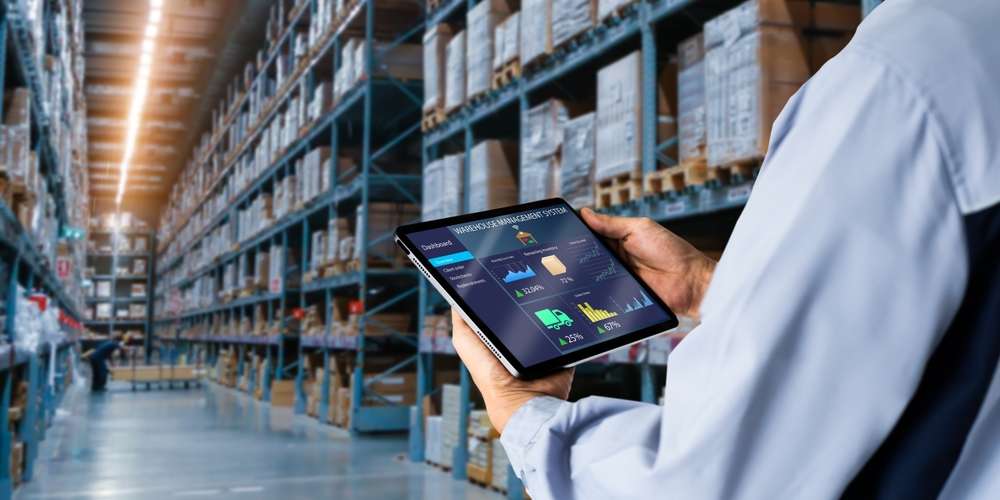Collaborative Intralogistics: Redefining Warehouse Efficiency
Warehouse operations stand at the cusp of a transformative era, where collaborative intralogistics is emerging as a game-changing approach. This innovative concept melds human expertise with cutting-edge technology, fostering a symbiotic relationship that amplifies efficiency, reduces errors, and optimises resource allocation. As businesses grapple with increasing complexities in supply chain management, collaborative intralogistics offers a compelling solution to streamline operations and gain a competitive edge.

The Evolution of Warehouse Management
Warehouse management has come a long way from its humble beginnings. In the early 20th century, warehouses were simple storage facilities with manual record-keeping and labour-intensive processes. The introduction of forklifts in the 1920s marked the first significant technological advancement, improving material handling efficiency.
The 1970s saw the advent of computerised warehouse management systems (WMS), which revolutionised inventory tracking and order processing. However, these systems were often isolated and lacked real-time capabilities. The 1990s brought barcode technology and radio-frequency identification (RFID), enhancing inventory accuracy and traceability.
Despite these advancements, many warehouses still struggled with inefficiencies, bottlenecks, and a lack of real-time visibility. The concept of collaborative intralogistics emerged as a response to these challenges, aiming to create a more integrated and responsive warehouse environment.
Understanding Collaborative Intralogistics
Collaborative intralogistics represents a holistic approach to warehouse management that emphasises seamless interaction between human workers, automated systems, and intelligent software. At its core, this concept seeks to leverage the strengths of both human intuition and machine precision to create a more efficient and adaptable warehouse ecosystem.
Key components of collaborative intralogistics include:
-
Intelligent Automation: Advanced robotics and automated guided vehicles (AGVs) that can work alongside human workers.
-
Real-time Data Analytics: Sophisticated software that provides instant insights into warehouse operations, enabling quick decision-making.
-
Augmented Reality (AR) Systems: Wearable devices that assist workers in locating items and optimising picking routes.
-
Internet of Things (IoT) Sensors: Devices that monitor environmental conditions, equipment status, and inventory levels in real-time.
-
Artificial Intelligence (AI) Algorithms: Predictive models that optimise inventory management and resource allocation.
By integrating these elements, collaborative intralogistics creates a dynamic environment where human workers and automated systems complement each other, leading to enhanced efficiency and accuracy.
The Human Element in Collaborative Intralogistics
While technology plays a crucial role in collaborative intralogistics, the human element remains indispensable. Rather than replacing human workers, this approach aims to empower them with tools and information to perform their roles more effectively.
In a collaborative intralogistics environment, human workers take on more strategic roles, focusing on tasks that require complex decision-making, problem-solving, and customer interaction. For instance, warehouse managers can use real-time analytics to make informed decisions about resource allocation and inventory management. Pickers can leverage AR devices to locate items more quickly and accurately, while maintenance technicians can use predictive analytics to anticipate and prevent equipment failures.
This shift not only improves operational efficiency but also enhances job satisfaction and worker engagement. By freeing employees from repetitive, physically demanding tasks, collaborative intralogistics allows them to focus on higher-value activities that utilise their unique human capabilities.
Implementing Collaborative Intralogistics: Challenges and Solutions
While the benefits of collaborative intralogistics are clear, implementation can present several challenges. One of the primary hurdles is the initial investment required for technology upgrades and system integration. However, businesses can adopt a phased approach, starting with key areas of their operations and gradually expanding.
Another challenge is resistance to change among employees. To address this, companies should prioritise comprehensive training programmes and change management strategies. Demonstrating how collaborative intralogistics can make their jobs easier and more rewarding is crucial for gaining employee buy-in.
Data security and privacy concerns also need to be addressed, particularly when implementing IoT devices and cloud-based systems. Robust cybersecurity measures and clear data governance policies are essential to mitigate these risks.
Lastly, integrating various technologies and systems can be complex. Working with experienced system integrators and choosing scalable, interoperable solutions can help overcome this challenge.
The Future of Collaborative Intralogistics
As technology continues to evolve, the potential of collaborative intralogistics will only grow. We can expect to see more advanced AI algorithms that can predict demand patterns and optimise inventory levels with unprecedented accuracy. The integration of 5G networks will enable faster, more reliable communication between devices, further enhancing real-time capabilities.
Autonomous mobile robots (AMRs) are likely to become more sophisticated, capable of handling increasingly complex tasks alongside human workers. Virtual and augmented reality technologies will continue to improve, offering even more intuitive interfaces for warehouse staff.
Moreover, the concept of collaborative intralogistics is likely to extend beyond the warehouse, creating more integrated supply chains where manufacturers, distributors, and retailers share real-time data and resources seamlessly.
Practical Insights for Implementing Collaborative Intralogistics
• Start with a thorough assessment of your current warehouse operations to identify key areas for improvement
• Invest in scalable, interoperable technologies that can grow with your business
• Prioritise employee training and change management to ensure smooth adoption
• Implement robust data security measures to protect sensitive information
• Consider partnering with experienced system integrators for seamless implementation
• Regularly review and update your collaborative intralogistics strategy to stay ahead of technological advancements
In conclusion, collaborative intralogistics represents a paradigm shift in warehouse management, offering a path to unprecedented efficiency and adaptability. By fostering a symbiotic relationship between human workers and advanced technologies, businesses can create more responsive, accurate, and cost-effective warehouse operations. As we move into an increasingly complex and fast-paced business environment, embracing collaborative intralogistics may well be the key to staying competitive in the years to come.




